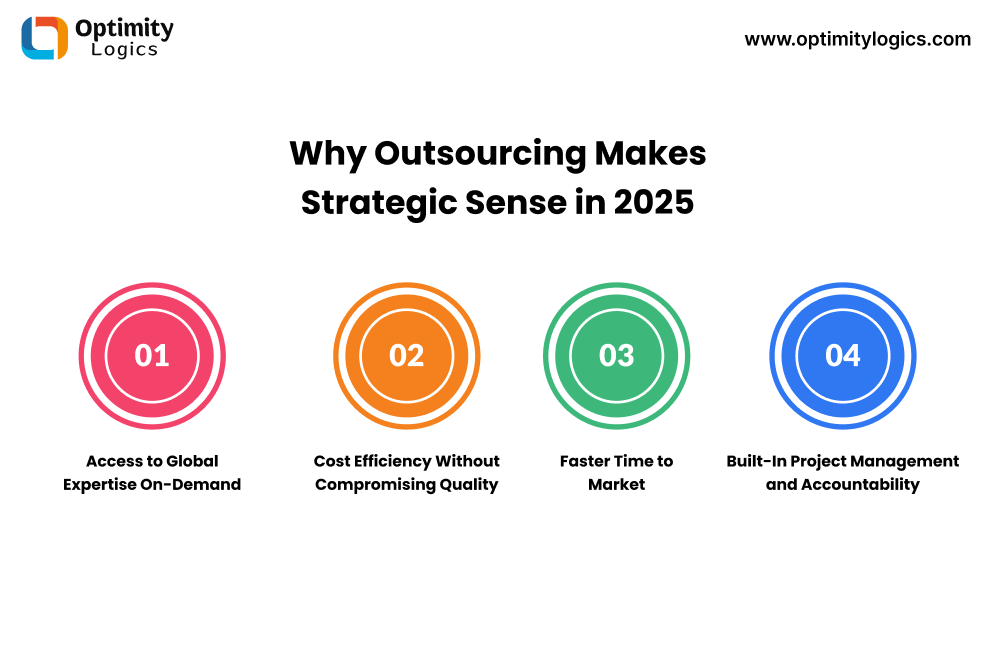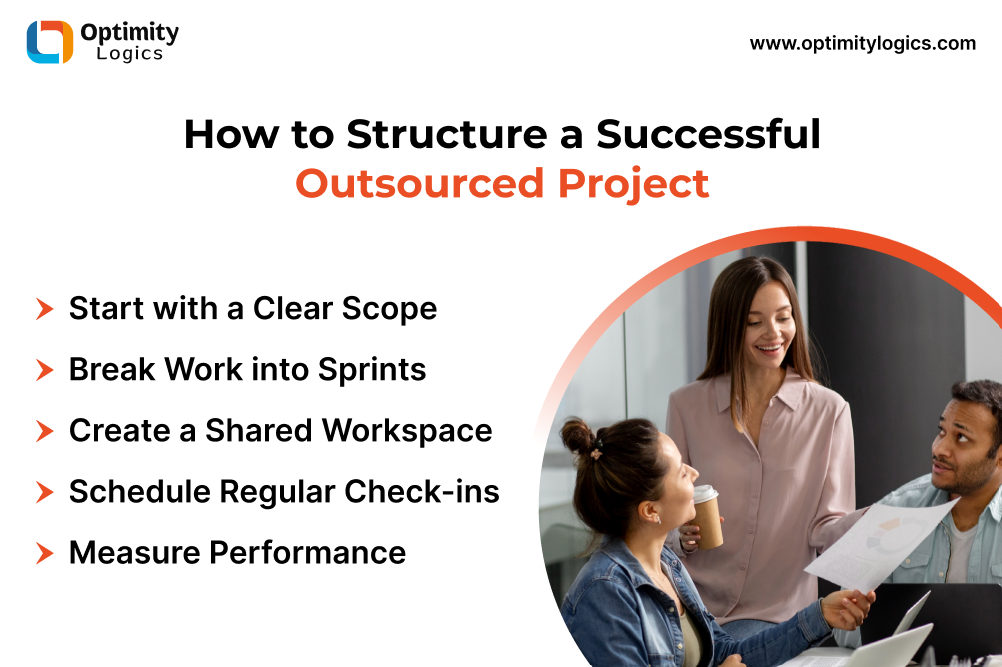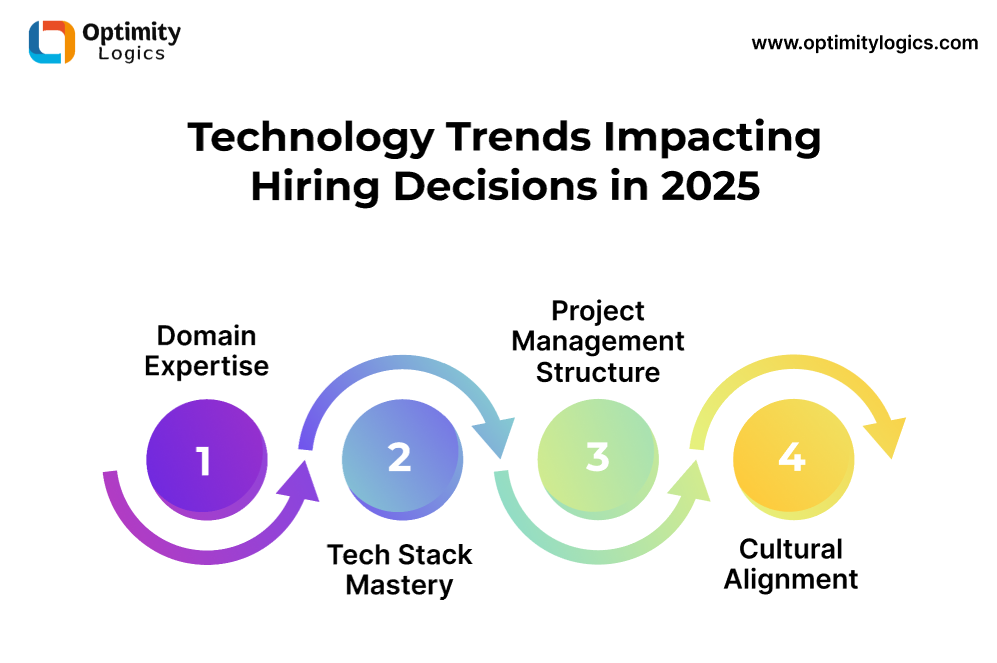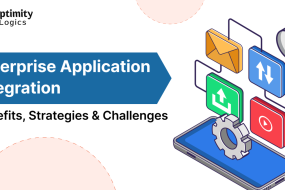
Why This Question Is More Important Than Ever in the 2025 Tech Talent Crunch
In the rapidly shifting digital economy of 2025, the decision to hire or outsource your tech team can determine the trajectory of your startup or product. As artificial intelligence accelerates software cycles, competition for top-tier developers intensifies, and investor expectations grow sharper, startup founders face an overwhelming challenge: How do you build a high-performance tech team without burning capital or time?
Gone are the days when in-house development was seen as the gold standard by default. Today, the landscape is far more nuanced. Building a tech product—whether it’s a SaaS platform, mobile application, or custom business solution—requires a strategic mix of agility, specialization, and scalability. Founders now must ask: Is hiring full-time developers still the smartest path? Or is outsourcing not only viable but superior?
In this guide, we’ll explore the true costs of hiring, the rising power of outsourcing in 2025, and how to structure a hybrid approach for long-term success.
The Myth of In-House Supremacy: Why Hiring Isn’t Always the Best Move
Hiring developers in-house seems straightforward—bring in talent, align them with your culture, and build. But in reality, in-house hiring in 2025 has become exceptionally costly and risky.
1. Talent Scarcity and Salary Inflation
Even with the global workforce more digitally connected than ever, top developers remain in short supply. Skilled engineers, especially those with AI, cybersecurity, and cloud-native expertise, command six-figure salaries plus equity. For early-stage startups, these costs can be prohibitive.
In cities like Melbourne, San Francisco, or London, hiring a senior software engineer could cost up to $180,000/year—before benefits and overheads.
2. Slow Recruitment Processes
Hiring is not just expensive—it’s slow. The average time to fill a tech role is 8–12 weeks. During that time, your competitors may have launched, iterated, and pivoted. For founders working against burn rates and market windows, speed is survival.
3. Limited Skill Sets in Small Teams
Even if you do hire a strong team, their skills may not cover the full stack. One engineer may be great at backend APIs but lack experience with front-end frameworks or DevOps. And hiring specialists for every function? That bloats your budget fast.
Why Outsourcing Makes Strategic Sense in 2025

Outsourcing is no longer just a cost-cutting tactic; in 2025, it’s a scalability enabler. Modern outsourcing partners deliver elite talent, faster timelines, and built-in flexibility—without the long-term liabilities.
Here’s why more founders are shifting to outsourcing:
1. Access to Global Expertise On-Demand
Need an AI engineer, a UX designer, and a React Native developer—this month? Good luck hiring all three in-house. But with a reliable outsourcing partner, you can scale your team instantly with vetted experts in each domain.
2. Cost Efficiency Without Compromising Quality
Outsourcing allows you to tap into high-quality talent in regions with lower living costs. For example, top-tier developers in Eastern Europe, Southeast Asia, and Latin America deliver work on par with Western standards—often at 40–60% lower cost.
3. Faster Time to Market
Speed is everything. Outsourcing agencies have ready-made teams with workflows, tools, and QA processes already in place. That means your MVP or V1 can hit the market in weeks, not months.
4. Built-In Project Management and Accountability
Modern agencies don’t just write code. They bring structure, PMs, documentation, sprint reviews, and QA cycles—all of which help founders focus on growth rather than tech minutiae.
Outsourcing ≠ Losing Control
One of the biggest fears founders express is losing visibility and control when outsourcing. But in 2025, with collaborative tools like GitHub Copilot, Notion, Linear, Slack, and Loom, managing remote teams is easier than ever. Transparency isn’t about geography—it’s about process.
By setting clear scopes, using agile sprints, and scheduling weekly standups, you maintain full visibility over progress, quality, and priorities—regardless of whether your developers are down the hall or across the globe.
The Hybrid Approach: Best of Both Worlds
Smart founders in 2025 are embracing hybrid teams—a core in-house leadership team that sets vision and product strategy, paired with an outsourced development team that builds and iterates at scale.
This structure provides:
- Strategic alignment: Founders and key product leads drive roadmap.
- Execution power: Outsourced team delivers on features, fixes, and experiments.
- Flexibility: Easily scale up or down based on funding rounds or user growth.
When to Hire In-House
Outsourcing is powerful, but it’s not always the answer. Here are scenarios where in-house hires make more sense:
- You need a CTO or technical co-founder to set long-term tech vision.
- You’re building highly proprietary or sensitive software (e.g., fintech or healthtech with strict data policies).
- You have a mature product that needs consistent iteration and maintenance.
When to Outsource
Outsource when you need to:
- Build an MVP fast
- Experiment with product-market fit
- Scale engineering output without long-term headcount risk
- Access skills you don’t have in-house (e.g., AI, blockchain, Web3, etc.)
Choosing the Right Outsourcing Partner
Not all agencies are created equal. To succeed with outsourcing, choose a partner that:
- Has verifiable case studies in your product space
- Communicates proactively and clearly
- Offers end-to-end services, including project management, testing, and UX/UI
- Uses modern tools for agile delivery
- Aligns with your company culture and time zones
One such example is optimitylogics, a development partner known for delivering high-impact solutions across Mobile App Development and Web Development projects. Their ability to combine technical depth with user-first design makes them an ideal partner for early-stage and growth-stage startups alike.
How to Structure a Successful Outsourced Project

- Start with a Clear Scope
Define what success looks like. Outline features, timelines, and must-haves. - Break Work into Sprints
Use 1–2 week sprints with demo reviews and retrospectives. - Create a Shared Workspace
Tools like Slack, Notion, or Trello help align remote teams. - Schedule Regular Check-ins
Don’t go radio silent. Weekly standups or demos keep everyone accountable. - Measure Performance
Use metrics like velocity, code quality, and on-time delivery to evaluate outcomes.
How to Choose the Right Outsourcing Partner
Finding the right outsourcing partner is not just about cost—it’s about compatibility, capability, and communication. In 2025, with outsourcing becoming a strategic growth lever, founders must go beyond checking portfolios. Look for:
- Domain Expertise: Does the partner have experience in your product category (e.g., fintech, healthcare, logistics)?
- Tech Stack Mastery: Can they work with modern technologies (like serverless, AI/ML, cross-platform development)?
- Project Management Structure: Do they offer agile delivery, regular sprint reviews, and dedicated account managers?
- Cultural Alignment: Time zone overlap, English fluency, and proactive communication style matter more than you think.
A reliable partner should feel like an extension of your core team. Founders increasingly look to providers like optimitylogics—known for blending technical excellence with startup-friendly agility.
Technology Trends Impacting Hiring Decisions in 2025

Several tech trends are reshaping hiring and outsourcing strategies this year:
- Agentic AI: With AI agents automating workflows, developers now focus more on orchestration and oversight than pure coding. Hiring decisions must consider AI literacy.
- Composable Architecture: Modern systems use interchangeable microservices. This requires cross-functional expertise—something easier to source through external agencies than a single full-stack hire.
- Remote Collaboration Maturity: Thanks to tools like GitHub Copilot, Zoom AI companions, and Notion AI, managing global teams has never been more efficient.
- Cybersecurity Demands: With increased compliance standards, especially in fintech and healthcare, hiring specialists in security architecture (often outsourced) has become non-negotiable.
These trends make flexibility essential. In many cases, it’s faster to hire an outsourcing team that’s already up-to-date than to train an in-house team from scratch.
Measuring Success: KPIs for Outsourced vs In-House Teams
Whether you hire or outsource, success needs to be measurable. Here are common KPIs founders use to evaluate each model:
| KPI | In-House Team | Outsourced Team |
| Velocity | Burdened by internal meetings | Often higher with focused delivery |
| Code Quality | Varies by hire; slower to iterate | Agencies often enforce strict QA |
| Time to Market | Slower due to hiring and onboarding | Typically faster using ready teams |
| Cost Efficiency | Higher long-term commitment | Lower short-term burn rate |
| Flexibility | Less flexible; hard to scale down | Easily scalable based on project stage |
| Product Ownership | Strong alignment if well managed | Needs detailed specs and clear scope |
Tracking these metrics quarterly helps founders decide when to scale up, pivot, or bring resources in-house.
When to Hire In-House: The Long Game
Hiring in-house makes sense when:
- You need deep domain ownership: A full-time team builds institutional knowledge and continuity.
- You’re managing sensitive data or IP: Sectors like medtech or defense benefit from tight internal control.
- You want to develop a distinct company culture: Having engineers under your roof helps shape long-term product identity.
Common in-house hires in 2025 include CTOs, DevOps engineers, and AI product leads—roles that form the strategic backbone of your company.
When to Outsource: Speed and Specialization Win
Outsourcing wins when:
- You need to move fast: MVPs, redesigns, or urgent feature releases benefit from prebuilt teams.
- You need niche expertise: Blockchain, cloud-native, or AI-based features often require specialists not available locally.
- You’re testing product-market fit: There’s no sense in building a permanent team for an unproven concept.
Outsourcing also lets founders explore technologies like Mobile App Development and Web Development with lower upfront risk—especially when paired with an experienced partner like optimitylogics.
The Hybrid Approach: Balance and Brilliance
Most successful startups in 2025 don’t choose just in-house or just outsourced. They combine both:
- Product Strategy, UX, and IP protection in-house
- Execution, QA, integrations, and edge cases outsourced
This model ensures agility and innovation without sacrificing vision or security. It’s particularly powerful for SaaS founders needing rapid iterations without hiring an entire dev team.
Example
A Melbourne-based startup keeps a product manager and a lead engineer in-house, while outsourcing the full app build to a remote team. The result: weekly demos, low costs, and a time-to-market advantage.
Final Thoughts: Your Playbook for Winning in 2025
The question of hiring vs. outsourcing is no longer black and white. In 2025, the smartest founders:
- Embrace technology trends that support distributed development
- Build hybrid teams to maintain control while scaling fast
- Use KPIs to stay agile and data-driven
- Choose partners who offer more than code—they offer product insight, scalability, and speed
In this environment, the right mix of in-house vision and outsourced velocity is your secret weapon. Whether you’re launching a platform, validating a startup, or scaling into new markets—let your team model be as agile and strategic as your product roadmap.












